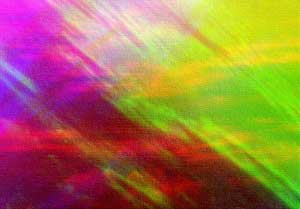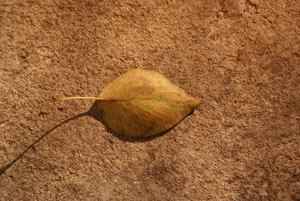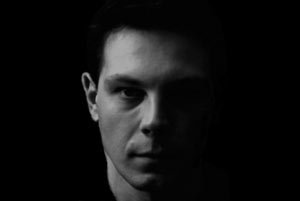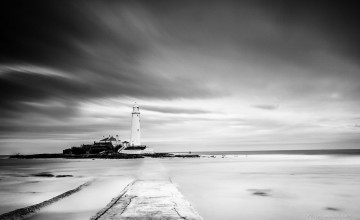Minimalism is indeed the art of less. As a life philosophy, minimalists focus on a few essential elements of life disregarding or making less use of everything else.
 Also in literature Minimalism has been profoundly explored. The action is led by context rather than actual description and the “image” is much up to the reader to recreate. Same applies for minimalism in music where composition tends to be stripped down to essentials, often creating repetitions of sound. It’s up to the audience to fill in the gaps.
Also in literature Minimalism has been profoundly explored. The action is led by context rather than actual description and the “image” is much up to the reader to recreate. Same applies for minimalism in music where composition tends to be stripped down to essentials, often creating repetitions of sound. It’s up to the audience to fill in the gaps.
Translated to the visual arts, Minimalism tends to focus on the abstract. Simple things capable of evoking emotion without superfluous content. A bash of color on a white canvas, or an expanded detail can bring out great minimalist paintings.
Minimalism in Photography
When it comes to photography, Minimalism gets somewhat confusing with many schools of thought discussing it. Some believe that the definition and execution of minimalism in the other plastic arts should also be translated for photography (detail, less information, etc.) while others tend to agree that in photography minimalism is more open to creativity and as long as there is a focus on the subject and the background is buried, a photo can be considered minimalist. This latter school of thought can widely include some macro shots in the category.
 As a personal opinion, I tend to go with the first. Less information, high contrast between background and subject, and often extremism in processing.
As a personal opinion, I tend to go with the first. Less information, high contrast between background and subject, and often extremism in processing.
The photo on the right is, for me, a prime example. A fairly common tabletop image where the majority of the frame is devoid of light with only two objects (far from abstract) perfectly visible and recognizable. All the main focus goes to these two objects. One thing that attracted me in this photo was the fact that although the cup is on a secondary plane, the way it was illuminated (or photoshoped) makes it the primary subject on the frame. The eyes are naturally drawn to it.
Color in minimalism
 Although I’m fond of monochromes, color can play a big role in minimalist photos, but extra care needs to be employed if minimalism is the objective. A frame full of color with an abstract theme does not make it a minimalist photo per se. Now, if the colors are blended well, and the whole frame is devoid a main subject, my guess is that you can categorize it as such (photo on the right).
Although I’m fond of monochromes, color can play a big role in minimalist photos, but extra care needs to be employed if minimalism is the objective. A frame full of color with an abstract theme does not make it a minimalist photo per se. Now, if the colors are blended well, and the whole frame is devoid a main subject, my guess is that you can categorize it as such (photo on the right).
Another prime example for minimalism is “light painting”. Usually a frame is black with traces of light as the main subject. In these cases, color is almost essential.

In the images above you can see what I meant. Although the right one still produces a nice effect, the left one (original) is much more powerful due to color, but both can be considered minimalist.
 Another application of color in minimalism is to actually withdraw the attention from the subject.
Another application of color in minimalism is to actually withdraw the attention from the subject.
This type of photos is usually not much seen since the subjects loose priority in the frame and require a “special kind of taste” from the audience to be truly appreciated. Nonetheless, using a background with the same tonal patterns as the subject can produce some highly appealing minimalist photography.
Minimalism in Portrait Photography
 If you search around, you’ll see that the great photography artists became known for their portraits. Portrait Photography is one of the hardest subjects of photography to master. So much is a variable that does not depend on the photographer, although much of it can be circumvented by proper studio techniques.
If you search around, you’ll see that the great photography artists became known for their portraits. Portrait Photography is one of the hardest subjects of photography to master. So much is a variable that does not depend on the photographer, although much of it can be circumvented by proper studio techniques.
Minimalism portraits are, as a rule, obtained by playing with the light. Hiding features with shadow while highlighting others is usually the norm and can lead to the most beautiful albeit extreme photos. Again, much of the success depends on the model, and when I’m the model it can’t really be said that beautiful photos come out. Hey, I’ve tried.
6 Tips for Minimalist photos
- Remove eye distractions: Anything that can be taken out of the frame, take it out, or hide it in shadow. Let there be only one main subject on the frame.
- Make it Striking: Whether you go for a splash of color or a splash of light, make it in a way that captures the eye.
- Make it though provoking: A photo doesn’t need to tell it all. Make it so your audience has to engage the neurons and think about what you are trying to say.
- Play with light: Hide and highlight your subject with shadows and light in a way that represents a not-so-common approach.
- Go for patterns: Repetitive patterns in an image can make it not only beautiful but appealing. Again, don’t reveal everything.
- Details matter: While a wide frame with plenty of information can be beautiful, the secret of minimalism is in details.
And this concludes my first thoughts on Minimalism in Photography. It’s a field that I’m very passionate about and it’s more than likely that I’ll come back to it again.
This is also, of course, my own entry to my Minimalism in Photography Project.
Now, get out there and explore your minimalist side. Oh, and take your camera with you…


Pingback: photographyVoter.com
Pingback: pligg.com
kriz cpec
October 25, 2007 at 6:37 am
Thanks for the tips. Would like to ask if you mean Minimalist photos are ones that made to be thought-provoking in your third tips?
Pingback: Minimalism in Photography « Ordinary Photography
Pingback: Minimalism in Photography « Ordinary Photography
A Marques
October 26, 2007 at 2:42 pm
Hi again kriz,
Well, I didn’t mean that all minimalist photos need to be thought-provoking. But it helps if you intend to leave a mark on your audience. This doesn’t apply to Minimalism only but to photography in general. You can create a nice photo that your audience likes (colors, subject, whatever) or you can create a photo that intrigues. The latter ones are the ones that won’t be easily forgotten.
Colin Hall
January 28, 2010 at 10:27 pm
Minimalism is a very difficult discipline to grasp, especially for a photographer. It is so tempting to fill the frame and use balances to give dimension to an images. I especially like the top image with that lovely splash of red, the V shape gives the whole image a passion that strikes something prime-evil in me.
somayieh
December 15, 2010 at 10:06 pm
I like the lastest one.I think it’s good to see Giulio Nesi’s photos